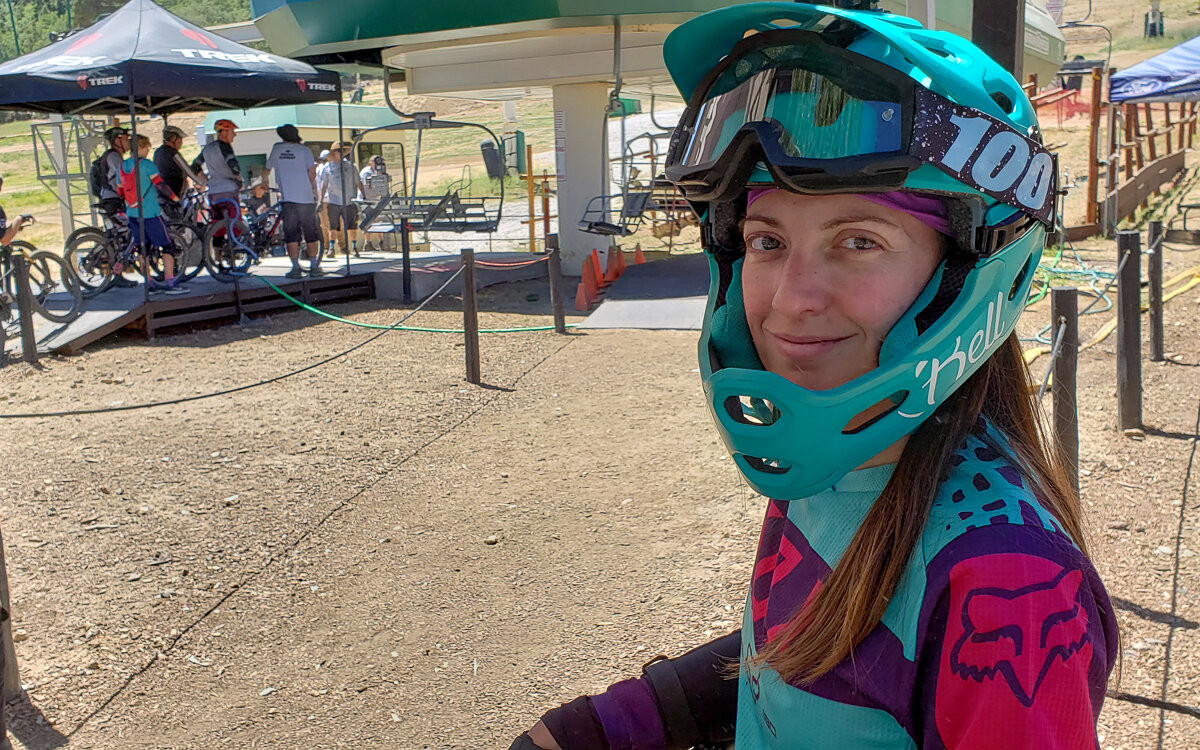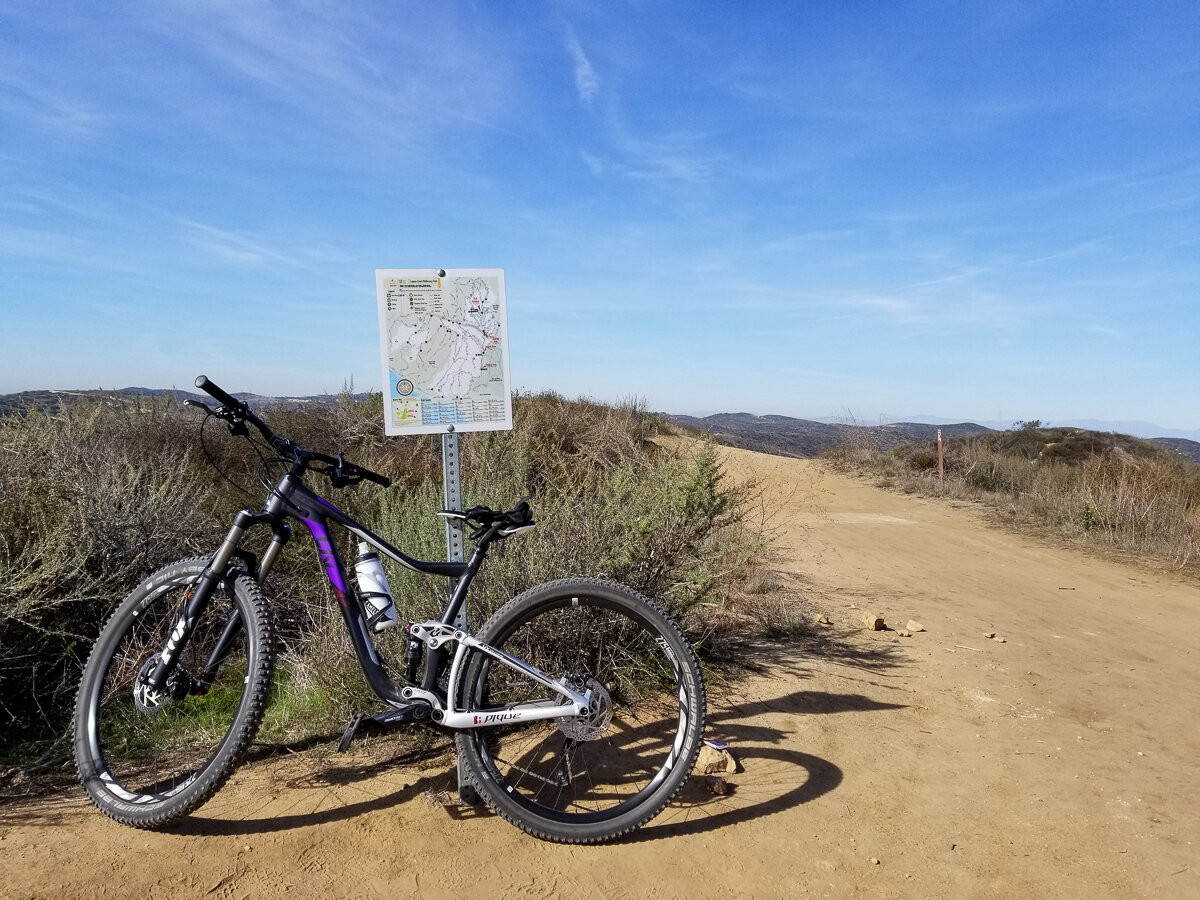Embarking on the exhilarating world of mountain biking can be incredibly rewarding, especially for women seeking adventure and fitness in the great outdoors. If you’re drawn to the trails and the challenge of navigating varied terrain, understanding the essentials of Womens Mountain Bikes is your first step. This guide is designed to equip you with the knowledge to confidently start your mountain biking journey, ensuring you feel prepared, comfortable, and excited to explore.
Essential Gear for Your Womens Mountain Bike Adventures
Before you even think about hitting the trails, gathering the right gear is paramount. Beyond the womens mountain bike itself, certain equipment is non-negotiable for safety, comfort, and preparedness. A reliable backpack is your first key investment. The Osprey Raven 10 Women’s Hydration Backpack, or similar models designed for women, are excellent choices. These backpacks are thoughtfully designed with multiple pockets, including specialized compartments for essential tools and hydration systems, making them ideal for mountain biking.
What you pack in your backpack is a reflection of personal needs and ride duration, but some items are universally crucial for every mountain bike outing:
- Multi-tool: A compact multi-tool is essential for on-the-fly adjustments and minor repairs to your womens mountain bike.
- Spare tube and tire levers: Flat tires are a common occurrence on trails. Knowing how to change a tube and having the tools readily available is vital.
- Pump or CO2 inflator: To reinflate your tire after a change, a pump or CO2 inflator is necessary. CO2 is quicker, while a pump is reusable.
- First-aid kit: Small scrapes and bumps are part of the learning curve. A basic first-aid kit with bandages, antiseptic wipes, and pain relievers is crucial.
- Hydration: Water is non-negotiable. A hydration pack or water bottles are essential to stay hydrated, especially on longer rides.
- Snacks: Energy levels can dip quickly on the trail. Pack energy bars, trail mix, or other snacks to keep you fueled.
- Phone and ID: In case of emergencies, having a charged phone and identification is a must.
- Sunscreen and lip balm: Protect your skin and lips from the elements, even on cloudy days.
- Allen keys and wrench: Having a separate set of allen keys and a small wrench can be helpful for more specific adjustments to your womens mountain bike.
 Mountain biking safety gear for women
Mountain biking safety gear for women
Dressing the Part: Womens Mountain Bike Clothing Essentials
Choosing the right clothing is as important as selecting the right womens mountain bike. Mountain bike clothing for women is designed for performance, comfort, and safety. While a full professional outfit isn’t necessary to start, understanding the principles of appropriate attire is key.
The right womens mountain bike clothing offers several benefits:
- Freedom of Movement: Mountain biking requires dynamic movements. Clothing should be flexible and allow for a full range of motion.
- Comfort: Long rides can become uncomfortable quickly with ill-suited clothing. Padded shorts or chamois are game-changers for saddle comfort.
- Safety: Snug-fitting clothes prevent snagging on bike parts or trailside obstacles. Mountain biking shoes enhance grip and control.
- Moisture Management: Mountain biking is a physical activity. Moisture-wicking fabrics keep you dry and comfortable by pulling sweat away from your skin.
Here’s a breakdown of essential womens mountain bike clothing:
- Helmet: A non-negotiable safety item. Ensure it fits properly and meets safety standards.
- Cycling shorts or chamois: Padded shorts are crucial for comfort, reducing friction and pressure on longer rides.
- Moisture-wicking jersey: Opt for breathable, moisture-wicking fabrics to stay dry and comfortable.
- Gloves: Gloves protect your hands in case of a fall and improve grip and control.
- Mountain biking shoes: These shoes have stiffer soles for better power transfer and grippy outsoles for traction on pedals and when walking. Flat pedal shoes or clipless shoes (for use with clipless pedals) are common choices.
- Eye protection: Sunglasses or cycling glasses protect your eyes from sun, dust, and debris.
Consider layering your clothing, especially in variable weather conditions. Base layers, mid-layers, and outer layers allow you to adjust to changing temperatures and conditions on the trail.
Choosing Your Ride: Understanding Womens Mountain Bikes
Selecting the right womens mountain bike is crucial for an enjoyable and successful start to mountain biking. While marketing often highlights “womens specific” bikes, the key considerations are fit and component choices that cater to a woman’s typical physique and riding style.
Here’s a breakdown of what to consider when choosing a womens mountain bike:
-
Frame Geometry and Sizing: Pay close attention to frame size. Womens mountain bikes often feature adjusted geometry, including shorter top tubes and narrower handlebars, to better fit the average female physique. Getting professionally fitted at a bike shop is highly recommended.
-
Bike Type:
- Hardtail: Front suspension only. Lighter, more efficient for climbing, and generally more affordable. Excellent for beginners and smoother trails.
- Full Suspension: Front and rear suspension. Provides more comfort, control, and capability on rougher, more technical trails. More expensive and can be heavier.
- Cross-Country (XC): Designed for speed and efficiency, lighter weight, suitable for racing and less technical trails.
- Trail: Versatile bikes, balanced for climbing and descending, good for a wide range of trails. A great all-around choice for many women.
- Enduro: Built for aggressive downhill riding and technical trails, robust suspension, less efficient for climbing.
-
Components:
- Suspension: Consider air suspension for adjustability. Women often benefit from fine-tuning suspension to their lighter weight.
- Brakes: Hydraulic disc brakes offer superior stopping power and modulation, especially important on varied terrain.
- Drivetrain: Modern drivetrains offer wide gear ranges, simplifying shifting and making climbs easier. Look for reliable brands like Shimano or SRAM.
- Saddle: Saddles are very personal. Womens specific saddles are often designed with different widths and shapes to enhance comfort. Don’t hesitate to try different saddles.
- Handlebars and Grips: Consider handlebar width and grip comfort. Smaller diameter grips can be more comfortable for smaller hands.
Test riding different womens mountain bikes is crucial. Visit local bike shops, talk to experts, and try out various models to find the bike that feels right for you.
Trail Etiquette: Sharing the Trails Respectfully
Understanding and practicing trail etiquette is essential for a positive experience for yourself and everyone else on the trails. Mountain bikers are generally expected to yield to other trail users.
Here are key rules of trail etiquette for women mountain bikers:
- Yield to Hikers: Mountain bikes should always yield to pedestrians. Slow down, announce your presence politely (“On your left!”), and give hikers ample space to pass.
- Yield to Equestrians: Horses can be easily spooked. Yield to horses, stop if necessary, and ask the rider for instructions on how to pass safely. Pass slowly and carefully.
- Uphill vs. Downhill Yielding: Generally, cyclists going downhill should yield to those climbing uphill. It’s easier for downhill riders to stop and start again.
- Stay on Marked Trails: Respect trail boundaries and avoid creating new trails. Staying on designated trails minimizes environmental impact and prevents erosion.
- Don’t Ride on Closed Trails: Trail closures are in place for a reason, often for maintenance or environmental protection. Respect closures and find alternative trails.
- Alert Others of Your Presence: Use a bell or a polite verbal warning (“On your left!”) when approaching others from behind, especially on blind corners or narrow trails.
- Leave No Trace: Pack out everything you pack in. Don’t litter. Minimize your impact on the environment.
- Control Your Speed: Ride within your abilities and at a speed that is safe for trail conditions and other users.
 Beginner mountain bike trail
Beginner mountain bike trail
Know Your Route: Planning for Success
Before heading out, planning your route is crucial, especially when starting out on womens mountain bikes. This ensures you choose trails within your skill level and avoid getting lost or overwhelmed.
Steps for effective route planning:
- Trail Maps and Apps: Utilize trail maps (paper or digital apps like Trailforks, MTB Project) to familiarize yourself with the trail network.
- Trail Ratings: Pay attention to trail ratings (beginner, intermediate, advanced). Start with beginner-rated trails and gradually progress as your skills improve.
- Distance and Elevation Gain: Consider the distance and elevation gain of the route in relation to your fitness level. Start with shorter, less demanding rides.
- Check Trail Conditions: Before heading out, check for recent trail reports or conditions. Weather can significantly impact trail conditions.
- Inform Someone of Your Plans: Let a friend or family member know where you are going and when you expect to be back, especially when riding solo.
- Don’t Be Afraid to Hike-a-Bike: If you encounter a section that is beyond your comfort level, it’s perfectly acceptable to get off your womens mountain bike and walk it (“hike-a-bike”). There’s no shame in prioritizing safety and building confidence gradually.
Enhance Your Skills: Skills Clinics for Womens Mountain Bikes
Investing in a mountain bike skills clinic can significantly accelerate your learning curve and boost your confidence on your womens mountain bike. Clinics offer structured learning in a supportive environment, often tailored specifically for women.
Benefits of skills clinics:
- Fundamental Techniques: Learn essential techniques like platform position, scanning the trail, body positioning for uphill and downhill, cornering, and braking.
- Confidence Building: Clinics provide a safe space to practice skills and overcome fears under the guidance of experienced instructors.
- Efficiency and Flow: Improve your riding technique to become more efficient, ride with better flow, and conserve energy.
- Safety Skills: Learn how to handle different trail features safely and respond to unexpected situations.
- Maintenance Basics: Some clinics also cover basic maintenance and repairs, including how to fix a flat tire on your womens mountain bike.
- Women-Specific Instruction: Womens clinics often address specific concerns and learning styles of women riders, creating a more comfortable and encouraging learning environment.
Look for skills clinics in your local area. Bike shops, cycling clubs, and outdoor organizations often host clinics.
Track Your Progress: The Ride Log
Keeping a ride log is a valuable tool for tracking your progress, staying motivated, and setting goals in your womens mountain bike journey.
Benefits of a ride log:
- Track Improvement: Documenting your rides allows you to see how you are improving over time – distance, speed, trails conquered, and skills developed.
- Identify Challenges and Strengths: Note trails or sections you find challenging and areas where you excel. This helps you focus your practice and choose appropriate trails.
- Stay Motivated: Seeing your progress in writing can be highly motivating and encourage you to keep riding and pushing your boundaries.
- Set Goals: Use your ride log to set realistic goals – ride a longer distance, conquer a specific trail feature, improve your climbing speed, etc.
- Reflect and Learn: Review your ride log to identify patterns, learn from mistakes, and adjust your training or riding approach.
You can use a simple paper notebook, a spreadsheet, or a dedicated app like Strava or a smartwatch to track your rides. Record details like date, location, trail, distance, time, elevation gain, weather conditions, bike type (womens mountain bike), challenges, successes, and any notes or observations.
Starting mountain biking on a womens mountain bike is an empowering and rewarding journey. By equipping yourself with the right gear, knowledge, and a spirit of adventure, you’ll be well on your way to enjoying the incredible trails and experiences that await. Embrace the challenge, celebrate your progress, and enjoy the ride!
